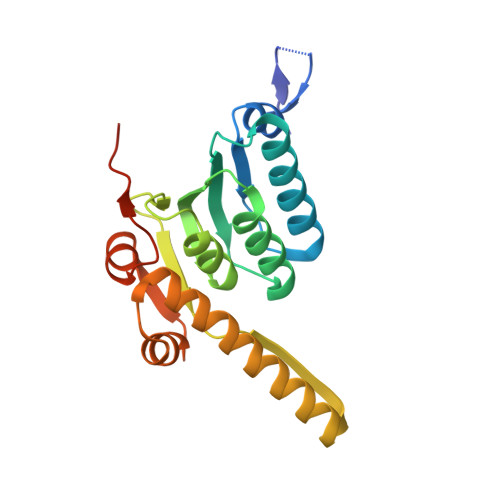Insights into structural network responsible for oligomerization and activity of bacterial virulence regulator caseinolytic protease P (ClpP) protein.
Gersch, M., List, A., Groll, M., Sieber, S.A.(2012) J Biological Chem 287: 9484-9494
- PubMed: 22291011
- DOI: https://doi.org/10.1074/jbc.M111.336222
- Primary Citation of Related Structures:
3V5E, 3V5I - PubMed Abstract:
The barrel-shaped caseinolytic protease P (ClpP) is a main virulence regulator in the bacterial pathogen Staphylococcus aureus (SaClpP). It consists of two heptameric rings forming a homotetradecamer with an inner chamber that houses the 14 active sites. We recently showed that SaClpP is able to adopt a compressed, inactive conformation. We present here the 2.3 Å resolution structure of SaClpP in its closed, active conformation as well as the structure of the S98A mutant. Comprehensive mutational analysis aiming at destabilizing one or the other or both conformations was able to pinpoint key residues involved in this catalytic switch and in the heptamer-heptamer interaction. By probing the active site serine with a covalently modifying β-lactone probe, we could show that the tetradecameric organization is essential for a proper formation of the active site. Structural data suggest that a highly conserved hydrogen-bonding network links oligomerization to activity. A comparison of ClpP structures from different organisms provides suggestive evidence for the presence of a universal mechanism regulating ClpP activity in which binding of one subunit to the corresponding subunit on the other ring interface is necessary for the functional assembly of the catalytic triad and thus for protease function. This mechanism ensures controlled access to the active sites of a highly unspecific protease.
- Center for Integrated Protein Science Munich, Technische Universität München, Department of Chemistry, Garching, Germany.
Organizational Affiliation:
















